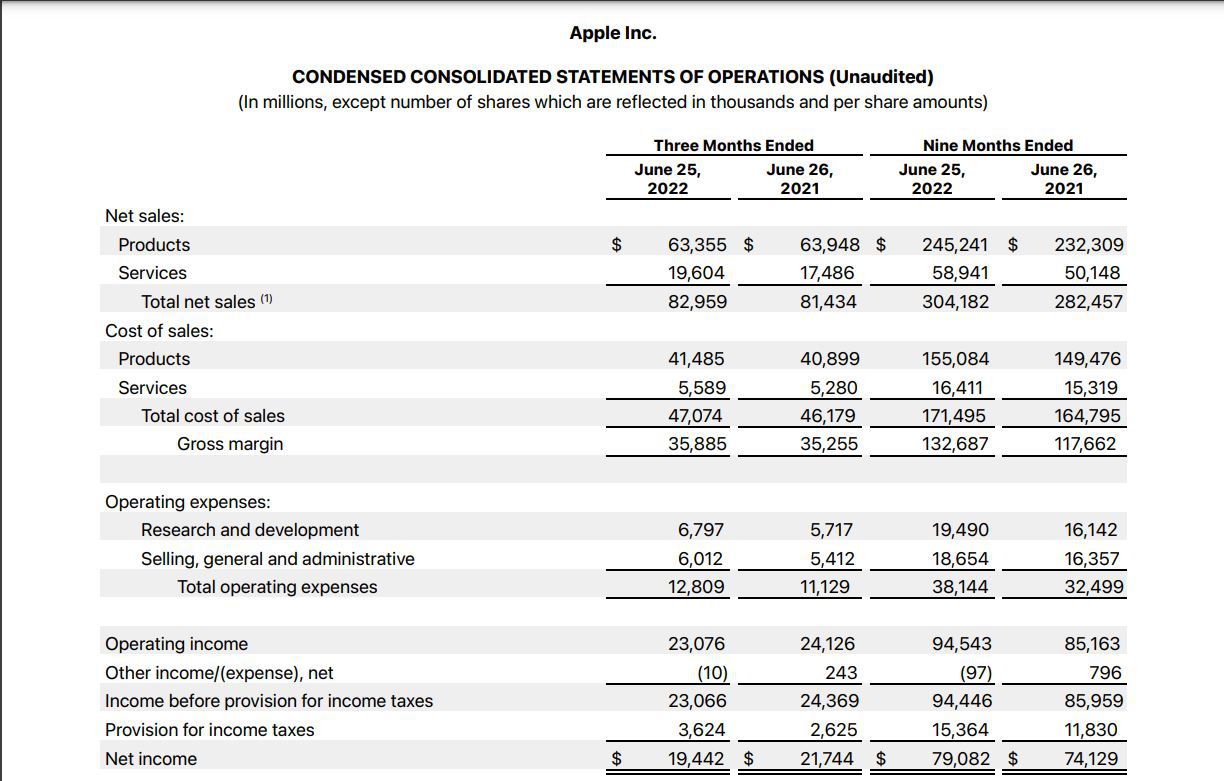Home>Finance>What Are Capital Structure Weights? How Are They Calculated?


Finance
What Are Capital Structure Weights? How Are They Calculated?
Published: December 24, 2023
Learn about capital structure weights in finance and how they are calculated, important factors for understanding a company's financial health and stability.
(Many of the links in this article redirect to a specific reviewed product. Your purchase of these products through affiliate links helps to generate commission for LiveWell, at no extra cost. Learn more)
Table of Contents
- Introduction
- Understanding Capital Structure Weights
- Importance of Capital Structure Weights
- Factors Influencing Capital Structure Weights
- Calculation Methods for Capital Structure Weights
- Using Market Values for Capital Structure Weights
- Using Book Values for Capital Structure Weights
- Advantages and Disadvantages of Different Calculation Methods
- Conclusion
Introduction
When examining the financial health of a company, one important aspect to consider is its capital structure. Capital structure refers to the mix of debt and equity financing that a company uses to fund its operations and growth. It plays a crucial role in determining the financial risk and return on investment for both the company and its investors.
Within the context of capital structure, capital structure weights refer to the proportion of debt and equity that make up a company’s capital structure. These weights provide valuable insights into how a company finances its operations and the relative importance of debt and equity in its overall financial structure.
The calculation of capital structure weights is essential for various financial analyses, such as determining the cost of capital, evaluating the financial risk of the company, and making investment decisions. It helps stakeholders assess the financial stability and leverage of the company, which can impact its ability to generate profits and repay debts.
Capital structure weights are typically expressed as percentages, representing the contribution of each source of financing to the total capital structure. For example, a company with 70% equity financing and 30% debt financing would have capital structure weights of 70% and 30%, respectively.
Understanding the importance and calculation methods of capital structure weights is crucial for investors, financial analysts, and business managers, as it provides insights into the financial risk, profitability, and long-term stability of a company. By analyzing and interpreting these weights, stakeholders can make informed decisions regarding investments, financial strategies, and business operations.
Understanding Capital Structure Weights
Capital structure weights are a fundamental component of a company’s financial structure. They represent the proportion of debt and equity financing that contribute to the overall capital structure of a company. To fully grasp the significance of capital structure weights, it is essential to understand the concept of debt and equity financing.
Debt financing refers to raising capital by borrowing money from external sources, such as banks or issuing bonds. Companies that utilize debt financing are required to repay the borrowed amount, along with interest, over a specified period. Interest payments are tax-deductible, making debt financing an attractive option for many businesses.
On the other hand, equity financing involves raising capital by selling ownership shares of the company. Investors who purchase these shares become shareholders and are entitled to a portion of the company’s profits and voting rights. Equity financing does not require repayment like debt financing but dilutes ownership and can result in a loss of control for existing shareholders.
Capital structure weights reflect the relative importance of debt and equity financing in a company’s overall financial structure. These weights represent the proportion of each financing source to the total capital employed by the company. For example, if a company has $1 million in debt and $2 million in equity, the debt weight would be 33% ($1 million divided by $3 million) and the equity weight would be 67% ($2 million divided by $3 million).
Capital structure weights provide key insights into a company’s financial risk, profitability, and cost of capital. A higher proportion of debt in the capital structure indicates a higher level of financial risk as the company is more susceptible to fluctuations in interest rates and has the responsibility to make regular interest and principal payments. Conversely, a higher proportion of equity signifies a lower financial risk as the company is not bound by contractual interest and principal obligations.
By analyzing capital structure weights, investors and financial analysts can gain a clearer understanding of a company’s risk-return profile. Companies with a higher equity weight may be perceived as less financially risky, but they may also have a higher cost of capital due to the dilution of ownership and potential dividend payments. On the other hand, companies with a higher debt weight may have a lower cost of capital but are exposed to greater financial risk.
In summary, capital structure weights play a vital role in assessing a company’s financial structure and risk profile. By understanding these weights, investors and analysts can make informed investment decisions and evaluate a company’s ability to generate profits, manage debts, and sustain long-term growth.
Importance of Capital Structure Weights
The capital structure of a company has a significant impact on its financial health and performance. As a crucial component of capital structure, capital structure weights hold great importance in assessing the financial risk, profitability, and overall stability of a company. Here are some key reasons why capital structure weights are essential:
1. Financial Risk Assessment: Capital structure weights help in evaluating the financial risk associated with a company. A higher proportion of debt financing implies greater financial leverage, which can amplify both gains and losses. By understanding the capital structure weights, investors and stakeholders can assess the potential risk exposure and make informed decisions.
2. Cost of Capital: Determining the cost of capital is crucial for evaluating the viability of investment projects and assessing the company’s overall financial performance. Capital structure weights play a critical role in calculating the cost of debt and equity. By analyzing the weights, companies can estimate the cost of capital, which is the required return rate for investors.
3. Profitability Considerations: The capital structure weights influence a company’s profitability. A well-balanced capital structure can optimize the cost of borrowing and provide an optimal return on equity. By analyzing the weights, companies can identify the ideal mix of debt and equity financing that maximizes profitability and improves shareholder returns.
4. Decision-Making for Investors: Investors rely on capital structure weights to assess the financial health and stability of a company. These weights provide insights into the company’s ability to meet its financial obligations and generate returns on investment. By considering the capital structure weights, investors can make informed investment decisions that align with their risk appetite and return expectations.
5. Long-Term Financial Stability: The capital structure weights reflect the long-term financial stability of a company. A balanced capital structure with appropriate weights can indicate that the company is effectively managing its financial obligations and has a sustainable financing strategy in place. It demonstrates the ability to navigate economic downturns and maintain resilience in the face of financial challenges.
Overall, capital structure weights provide a comprehensive understanding of a company’s financial structure, risk profile, profitability, and long-term stability. By analyzing these weights, companies, investors, and financial analysts can make informed decisions, optimize capital allocation, and create strategies that drive sustainable growth and success.
Factors Influencing Capital Structure Weights
Capital structure weights are influenced by various factors that contribute to the overall financial structure of a company. Understanding these factors is crucial for determining the optimal mix of debt and equity financing that aligns with a company’s specific needs and goals. Here are some key factors that influence capital structure weights:
1. Business Risk: The nature and level of risk associated with a company’s operations play a significant role in determining capital structure weights. Industries with higher business risk, such as technology or pharmaceuticals, may prefer a lower proportion of debt to minimize financial risk. On the other hand, stable and mature industries may have higher debt weights as they can comfortably manage their financial obligations.
2. Company Size and Growth Stage: The size and growth stage of a company also affect its capital structure weights. Start-up companies may rely heavily on equity financing due to their higher risk profiles and limited access to debt financing. As companies grow and generate steady cash flows, they may incorporate more debt into their capital structure to take advantage of tax benefits and lower cost of capital.
3. Market Conditions: The prevailing market conditions can impact a company’s capital structure weights. During periods of low interest rates, companies may be encouraged to take on more debt as it becomes more affordable. Conversely, during periods of high interest rates, companies may opt for equity financing or reduce their debt weights to mitigate financial risk.
4. Access to Financing Options: The availability and cost of debt and equity financing influence capital structure weights. Companies with strong credit ratings and access to favorable lending terms may rely more on debt financing. Conversely, companies that struggle to secure debt financing or have higher borrowing costs may rely more heavily on equity financing.
5. Financial Flexibility: Companies with a higher need for financial flexibility may opt for a lower proportion of debt financing. This allows them to have more cash flow available for operations, investments, and unforeseen expenses. On the other hand, companies with stable cash flows and lower financial flexibility may choose a higher debt weight to take advantage of the tax shield and lower cost of debt.
6. Regulatory and Legal Considerations: Regulatory and legal requirements can also impact capital structure weights. Industries with specific capital structure regulations, such as banking or insurance, may have stricter requirements for debt-to-equity ratios. Companies operating in these industries need to consider these regulations when determining their capital structure weights.
7. Investor Expectations: Investor expectations and preferences can influence capital structure weights. For example, if a company’s investors have a preference for stable dividend payments, the company may increase its equity weight to fulfill those expectations. Conversely, if investors value capital appreciation and are willing to tolerate higher financial risk, the company may increase its debt weight.
By considering these factors, companies can analyze their specific circumstances and make informed decisions regarding the optimal capital structure mix. Striking the right balance between debt and equity financing is essential to ensure financial stability, maximize shareholder value, and align with the company’s goals and risk appetite.
Calculation Methods for Capital Structure Weights
Calculating capital structure weights involves determining the proportion of debt and equity financing in a company’s overall financial structure. There are two common methods for calculating these weights: using market values and using book values.
1. Using Market Values: One approach is to calculate capital structure weights based on market values. Market value represents the current market price at which a company’s securities, such as stocks and bonds, are being traded. To calculate the market value of debt, the outstanding debt securities, such as bonds, are multiplied by their market price. The market value of equity is calculated by multiplying the current stock price by the number of outstanding shares.
Once the market values of debt and equity are determined, the weights can be calculated by dividing each component’s market value by the total market value of the company. For example, if a company has a total market value of $10 million, with $6 million in market value of debt and $4 million in market value of equity, the debt weight would be 60% ($6 million divided by $10 million) and the equity weight would be 40% ($4 million divided by $10 million).
2. Using Book Values: Alternatively, capital structure weights can be calculated based on book values. Book value represents the value of a company’s assets, liabilities, and equity as reported in its financial statements. To calculate the book value of debt, the outstanding debt balance is used. The book value of equity is determined by subtracting the liabilities, including debt, from the total assets.
Once the book values of debt and equity are determined, the weights can be calculated by dividing each component’s book value by the total book value of the company. Using the previous example, if a company has a total book value of $8 million, with $3 million in book value of debt and $5 million in book value of equity, the debt weight would be 37.5% ($3 million divided by $8 million), and the equity weight would be 62.5% ($5 million divided by $8 million).
It is important to note that using market values provides a more accurate reflection of the current market perception of a company’s financial structure. However, market values can be highly volatile and may not always reflect the true value of a company’s assets and liabilities. On the other hand, using book values provides a more stable and conservative approach to calculating capital structure weights, but it may not reflect the current market conditions.
Ultimately, the choice between using market values or book values depends on the specific circumstances and purposes of the analysis. Both methods have their advantages and limitations, and analysts should carefully consider these factors when calculating capital structure weights for comprehensive financial evaluation and decision-making.
Using Market Values for Capital Structure Weights
When calculating capital structure weights, one method is to use market values. Market values reflect the current market price at which a company’s securities, such as stocks and bonds, are being traded. This approach provides a real-time snapshot of investors’ perception of a company’s financial structure. Using market values for capital structure weights offers several advantages and considerations.
Accurate Representation: Market values capture the prevailing market sentiment and incorporate factors such as investor confidence, economic conditions, and industry trends. By using market values, the capital structure weights provide an accurate representation of how investors perceive the relative importance of debt and equity financing for the company.
Reflects Market Conditions: Market values for capital structure weights are influenced by the current market conditions. Fluctuations in interest rates, investor demand, and overall economic outlook can impact the prices of debt and equity securities. Therefore, using market values allows for the inclusion of these market dynamics, providing a more up-to-date assessment of the company’s financial structure.
Responsive to Changes: Capital structure weights based on market values are responsive to changes in the company’s financial performance and market sentiment. As the company’s stock price or bond prices fluctuate, the relative weights of debt and equity financing will also adjust accordingly. This responsiveness can be valuable for financial analysis and decision-making as it provides insights into the market’s perception of the company’s financial health.
Real-time Risk Assessment: Using market values for capital structure weights enables a real-time assessment of the company’s financial risk profile. Fluctuations in market values can indicate changes in investor confidence and perception of risk. Higher market values of debt can suggest increased financial risk, whereas higher market values of equity may imply lower risk.
Considerations: While using market values for capital structure weights offers valuable insights, it’s important to consider certain factors. Market values may be subject to short-term fluctuations driven by market sentiment, rather than reflecting the intrinsic value of the company’s assets or liabilities. Additionally, illiquid markets or securities with low trading volumes may not accurately reflect market values.
It’s also crucial to interpret market values in the context of the company’s specific circumstances and industry dynamics. Some industries may have higher volatility in market values or different market conventions that impact capital structure weights. Therefore, it’s important to conduct a thorough analysis and consider additional factors when leveraging market values for capital structure weight calculations.
Overall, using market values for capital structure weights provides a dynamic and real-time assessment of a company’s financial structure. It offers insights into investor sentiment, risk perceptions, and the impact of market conditions. By incorporating market values, financial analysts and investors can better evaluate the company’s financial risk, profitability, and overall financial health.
Using Book Values for Capital Structure Weights
When calculating capital structure weights, another method is to use book values. Book values represent the value of a company’s assets, liabilities, and equity as reported in its financial statements. This approach provides a stable and conservative perspective on a company’s financial structure. Using book values for capital structure weights offers several advantages and considerations.
Stability and Consistency: Book values provide a stable and consistent view of a company’s financial structure over time. Unlike market values, which can fluctuate based on market sentiment, book values are based on historical cost and are relatively less volatile. This stability allows for consistent analysis and comparison of capital structure weights.
Reflects Historical Investments: Book values consider the historical investments a company has made in its assets and liabilities. It takes into account the original purchase prices of property, equipment, and investments, providing a reflection of the actual resources invested in the company. This consideration can be particularly useful for assessing the long-term stability and asset base of the company.
Conservative Approach: Using book values for capital structure weights offers a conservative approach to analyzing a company’s financial structure. By relying on the reported values in the financial statements, it takes a more cautious view of the company’s assets and liabilities. This can help mitigate the potential overestimation or underestimation of the market values, which tend to be influenced by short-term market conditions.
Long-term Obligations: Book values for debt represent the actual outstanding balances of the company’s debt obligations rather than their market prices. This approach highlights the long-term financial commitments of the company. It provides insights into the company’s repayment obligations and its ability to meet these obligations over time.
Considerations: While book values provide stability and a conservative perspective, they also have certain limitations. Book values do not consider the potential appreciation or depreciation of assets and liabilities. They may not reflect the current market conditions or the market’s perception of the company’s financial health. Additionally, book values may not capture intangible assets or the true economic value of certain assets or liabilities.
It’s important to interpret book values in the context of the company’s specific circumstances and industry dynamics. Different industries may have varying requirements for reporting assets and liabilities, and the book values may reflect these industry-specific conventions.
When using book values for capital structure weights, financial analysts and investors should consider the purpose of the analysis, time horizon, and the specific needs of their evaluation. In some cases, a combination of market values and book values may provide a more comprehensive understanding of the company’s financial structure.
In summary, using book values for capital structure weights offers stability and a conservative perspective on a company’s financial structure. It provides insights into historical investments, long-term obligations, and a consistent basis for analysis. By incorporating book values, financial analysts and investors can gain a deeper understanding of a company’s financial health and evaluate its sustainability and long-term stability.
Advantages and Disadvantages of Different Calculation Methods
When calculating capital structure weights, there are different methods available, such as using market values or book values. Each method has its own advantages and disadvantages, which must be considered when assessing a company’s financial structure. Here are the advantages and disadvantages of these different calculation methods:
Using Market Values:
Advantages:
- Current and Reflective: Market values provide a real-time assessment of a company’s financial structure, as they incorporate the current market sentiment and factors such as investor confidence and economic conditions.
- Responsive to Market Changes: Market values are influenced by market dynamics, such as fluctuations in interest rates and investor demand. This responsiveness allows for quick adjustments to changes in a company’s financial structure.
- Aligns with Investor Perceptions: Using market values ensures that the capital structure weights reflect the market’s perception of a company’s risk profile and financial health, providing valuable insights for investors.
Disadvantages:
- Subject to Volatility: Market values can be highly volatile, especially during times of market turbulence or when a company’s stock or bond prices experience significant fluctuations. This volatility may not always reflect the true value of the company’s assets and liabilities.
- Not Representative of Intrinsic Value: Market values are influenced by investor sentiment and may deviate from the intrinsic value of the company’s assets and liabilities. This deviation may affect the accuracy of capital structure weight calculations.
- May Not Capture Illiquid Assets: Market values may not accurately reflect the value of illiquid assets that are not actively traded in the market. This can result in incomplete or distorted capital structure weight calculations.
Using Book Values:
Advantages:
- Stable and Consistent: Book values provide a stable and consistent view of a company’s financial structure over time. This stability allows for consistent analysis and comparison of capital structure weights.
- Conservative Approach: Book values offer a conservative perspective by relying on historical cost and reported values in the financial statements. This approach helps mitigate potential overestimation or underestimation of financial values.
- Long-term Assessment: Book values highlight the long-term obligations and commitments of a company, providing insights into the repayment obligations and the sustainability of a company’s capital structure.
Disadvantages:
- May Not Reflect Market Conditions: Book values may lag behind current market conditions and fail to capture short-term market fluctuations or the market’s perception of the company’s financial health.
- Excludes Market Sentiment: Book values do not incorporate investor sentiment or market perceptions and may not fully reflect how investors perceive a company’s financial risk and potential for growth.
- May Not Capture Intrinsic Value: Book values may not accurately represent the true economic value of certain assets or liabilities. It can result in discrepancies between the reported book values and the actual market value of the company’s financial structure.
Ultimately, the choice between using market values or book values for capital structure weight calculations depends on the specific purpose of the analysis and the context of the company’s financial situation. Analysts should carefully consider the advantages and disadvantages of each method while taking into account market conditions, industry dynamics, and the specific needs of their evaluation.
Conclusion
The calculation and understanding of capital structure weights are paramount for evaluating a company’s financial health, risk profile, and profitability. It allows investors, financial analysts, and business managers to make informed decisions regarding investment strategies, financial planning, and risk management.
Both market values and book values serve as useful methods for calculating capital structure weights, each with its own set of advantages and disadvantages. Using market values provides a real-time assessment of a company’s financial structure, capturing investor sentiments and market dynamics. Conversely, using book values offers stability and a conservative perspective, providing a historical and consistent basis for evaluation.
The choice between these methods depends on several factors, such as the accuracy and timeliness of information required, the company’s industry, and the specific goals of the analysis. Companies should consider which method aligns best with their risk appetite, financial stability, and long-term growth objectives.
Furthermore, factors influencing capital structure weights, such as business risk, company size, market conditions, financial flexibility, and investor expectations, must be carefully considered. These factors help in determining the optimal mix of debt and equity financing that aligns with the company’s specific circumstances, risk tolerance, and growth strategies.
By calculating capital structure weights accurately and considering the influencing factors, stakeholders can better evaluate a company’s financial risk, profitability, and long-term stability. This enables them to make informed investment decisions, optimize capital allocation, and develop effective financial strategies.
In conclusion, capital structure weights are a vital component in assessing a company’s financial health and risk profile. Utilizing the appropriate calculation method and considering the influencing factors allows for a comprehensive evaluation, ultimately leading to sound financial decision-making and sustainable growth in the ever-evolving business landscape.














